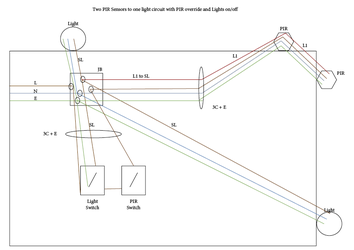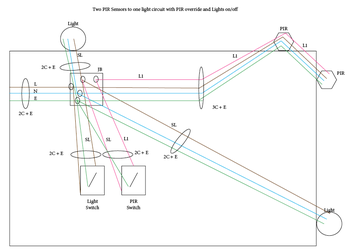R
rjwill10
Hi,
Trying to plan for my single outside lighting circuit to be controlled by two PIR's.
I've tried to draw it out (image below). My plan is that if the PIR switch is on and light switch is off, the lights will run with PIR. If the PIR switch is off, and the light switch is on, then lights will work permanently.
I plan to use maintenance free junctions boxes to control this from one JB.
Thanks in advance.

Trying to plan for my single outside lighting circuit to be controlled by two PIR's.
I've tried to draw it out (image below). My plan is that if the PIR switch is on and light switch is off, the lights will run with PIR. If the PIR switch is off, and the light switch is on, then lights will work permanently.
I plan to use maintenance free junctions boxes to control this from one JB.
Thanks in advance.










